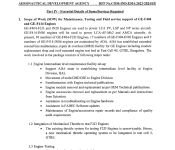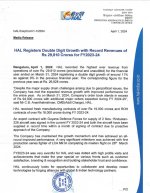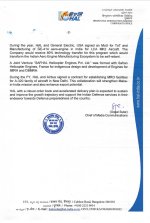Bengaluru: The joint production of GE Aerospace’s F414 engines in India will help the country overcome a striking technology gap, lay the foundation for indigenous development of bigger jet engines , and possibly open doors to exports, HAL chief CB Ananthakrishnan said, adding that the American company and Hindustan Aeronautics Limited could hammer out a deal within a year.
“We have lacked the capabilities required to build jet engines,” he said in an interview. “The deal we are negotiating with GE will help fix the shortcomings. It will bring advanced technologies into the country and form the basis of future engine programmes to meet the Indian Air Force’s growing needs.”
GE and HAL signed a memorandum of understanding in Washington in June to produce 99 F414 engines for India’s light combat aircraft (LCA) Mk-2 programme during PM Narendra Modi’s visit. The deal will involve 80% transfer of technology (ToT) and is estimated to be worth around $1 billion.
This “never-seen-before” scale of technology transfer will be a “big game-changer”, and result in the Mk-2 fighter jets having a significantly improved indigenous content compared to the two current LCA variants, Mk-1 and Mk-1A, Ananthakrishnan said. “Still, we will drive a hard bargain to conclude the most competitive deal. The figure of $1 billion has been indicated by them (GE) and our effort will be to bring it down.”
HAL’s current experience with engines includes manufacturing the AL-31FP engines for Sukhoi-30s under licence from Russia, and the Shakti engines that power the advanced light helicopter and the light combat helicopter that have been co-developed with French engine maker Safran, the HAL chief said. HAL is also carrying out repair and overhaul of other aircraft engines.
“We are manufacturing the AL-31FP and Shakti engines under technology transfer which is not as exhaustive as what we will get under the F414 deal. But the experience thus far has been good and there have been valuable learnings that will help execute the new programme,” Ananthakrishnan said. The first lot of F414 engines will be made in India three years after GE and HAL conclude the deal.
The ToT for F414s will cover 11 critical areas many of which were entirely off-limits more than a decade ago when the US and India began talks on the possible production of the engines in the country, HAL officials said. Back then, the US agreed to only 58% technology transfer, keeping a string of key engine technologies out of India’s reach.
The F414 has evolved from the F404 engine that powers the existing Mk-1 and Mk-1A variants and is imported from the US. The local production of the F414 engines will result in the Mk-2 jets having an indigenous content of 75% compared to 55%-60% in Mk-1A and 50% in Mk-1.
HAL will set up a new engine complex for producing the F414 engines as existing capacities are insufficient for the programme.
Ananthakrishnan said. “An exclusive engine complex to build bigger engines will be a significant capacity addition which will help meet the country’s future requirements.” He said with necessary approvals, GE and HAL could later use the facility for exporting engines without restricting the effort to Indian requirements.
India has sanctioned ₹10,000 crore for the Mk-2 programme. The new fighter will cater to the future requirements of IAF, which has already inducted several of the 40 earlier Mk-1s, ordered 83 newer Mk-1As and plans to order 97 more Mk-1As. The IAF could order more than 100 Mk-2s.
The Mk-2 will be ready for production in five years, the officials said.
It will have improved range, higher weapons payload capacity, superior radar capability, better avionics, advanced electronics, enhanced survivability, better situational awareness for pilots, network centric capabilities, and the ability to quickly switch from one role to another.
The 17.5-tonne fighter will have a maximum speed of 1.8 Mach, compared to the 13.5-tonne LCA Mk-1A that has a top speed of 1.6 Mach. The new aircraft will come with a payload capacity of 6.5 tonne (compared to 3.5 tonne for the Mk-1A) and it will carry a mix of weapons including beyond visual range air-to-air missiles, air-to-ground missiles, heavy precision guided weapons and conventional bombs.
The engine technologies that will now be transferred to India under the GE-HAL deal include machining and coating for single crystal turbine blades, fabrication of powder metallurgy discs, inertia friction welding for fan and afterburner, laser drilling technology for combustor, special coatings for corrosion and erosion, machining and coating of ceramic matrix composites for nozzle guide vanes, flaps and other parts, machining of thin-walled titanium casing, polymer matrix composites for bypass duct and bottle boring of shafts.















